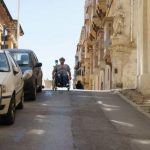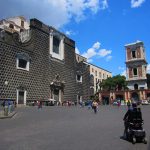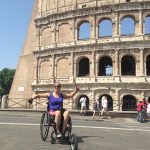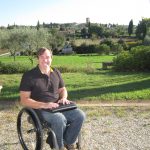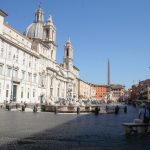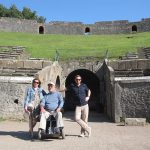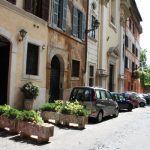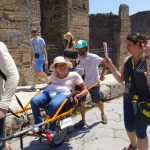Italy is one of the most visited counties in the world, and with so much to do and experience, it may seem overwhelming to plan a trip. The trick is to figure out where you want to spend most of your time and then go from there. So, to help you get started, here’s a list of the top wheelchair accessible places in Italy to visit.
1. SOUTH TYROL
Dolomites Accessible Route
A number of routes have been freed of all barriers to allow everyone to enjoy the extraordinary Dolomite landscape. Everyone, whatever their degree of mobility is, will have the chance to experience the landscape and geology of the Dolomites firsthand, which is what World Heritage stands for.
2. AOSTA VALLEY
Cervinia
The famous skiing location of Cervinia offers a great selection of hotels, apartments, and chalets suitable for all visitors. The ski school Scuola di sci del Cervino has two instructors trained for guiding and teaching people in a sit-ski. The ski school also has instructors for a lot of other conditions such as Down’s Syndrome, Autism, learning difficulties, global development delays, and Parkinson’s, it all depends on the level of someone’s physical, sensory, or cognitive ability.
3. PIEMONTE
Museo Egizio of Turin
Egizio is the world’s oldest museum devoted entirely to ancient Egyptian culture. The museum is completely accessible to wheelchairs and it also provides specific routes and workshops for special needs. The Museum provides also tactile routes for the blind and the partially sighted, accompanied by Egyptologists with specific experience.
4. VENETO
Gondolas (4 in all Venice)
One of the most classic Venetian attractions is the typical small boats named gondolas. Now, gondolas are accessible to the disabled too, thanks to the Gondolas 4 All project. Provided with specific enhancements and a special platform from the dock, anyone with reduced mobility will be able to get on board and sail safely while sitting in his wheelchair.
5. LOMBARDY
Sirmione
Sirmione is a lovely small town located on the Sirmio peninsula that divides the lower part of Lake Garda. The main historical landmark of Sirmione is the so-called Grottoes of Catullus (Grotte di Catullo), the most striking example of a Roman private building discovered in northern Italy. Most of the beautiful historical centers of the city and the Grottoes of Catullus are accessible.
Duomo Cathedral is the cathedral church of Milan, Lombardy. Dedicated to St Mary of the Nativity, the cathedral took nearly six centuries to complete. It’s the largest church in Italy, the third largest in Europe, and the fourth largest in the world. Disabled people have access to the Cathedral from the precinct using two side ramps with handrails. The nave and lateral aisles are accessible. A lift can be used to reach the Cathedral Terraces. The architectural barriers present allow access to the level of the walkways but it is not possible to complete the whole route.
6. LIGURIA
Pietra Ligure Accessible Beaches
In the enchanting small town of Pietra Ligure, you can find four free beaches, which are accessible to people with motor disabilities and are equipped with a chair job to allow everyone to enter the water.
7. TUSCANY
Uffizi Gallery of Florence
One of the most famous classical art galleries in Italy, the Uffizi Gallery is accessible with ramps and elevators. At the entrance, you can ask for a wheelchair of a size that is compatible with the elevator. Uffizi Gallery has also a special itinerary that allows the visually impaired to enjoy some of its masterpieces: Uffizi by Touch.
Piazza dei Miracoli of Pisa Piazza dei Miracoli (Square of Miracles), is a huge walled area located in Pisa, Tuscany, recognized as an important center of European medieval art and one of the finest architectural complexes in the world. In the square, you can find four important monuments: the Pisa Cathedral, the Pisa Baptistry, the Campanile (also known as the Leaning Tower), and the Camposanto Monumentale (Monumental Cemetery). The whole square is accessible to the disabled and you can also visit the medieval cathedral thanks to a couple of ramps. Piazza del Campo of Siena
Piazza del Campo is the most important public space of the historic center of Siena, Tuscany, and is regarded as one of Europe’s greatest medieval squares. It is renowned worldwide for its beauty and architectural integrity. The twice-a-year horse race, Palio di Siena, is held around the edges of the piazza.
8. LAZIO
Colosseum in Rome
Maybe one of the most famous Italian monuments, the Colosseum is the largest amphitheater ever built and stands out in the center of the city of Rome. Although partially ruined because of damage caused by earthquakes and stone robbers, the Colosseum is still an iconic symbol of Imperial Rome and is listed as one of the New 7 Wonders of the World. The Colosseum is accessible to the disabled on its lower and upper floors thanks to ramps and lifts.
9. CAMPANIA
Pompeii (archaeological site)
Pompeii is one of the biggest well-preserved archaeological sites in Italy and now it’s mostly accessible to the disabled. Thanks to a route made of iron gangways, everyone will be able to explore the ancient city and access the Domus (ancient Roman houses), which were previously precluded to visitors with reduced mobility.
10. APULIA
Alberobello
The beautiful small town of Alberobello in Puglia is mostly known for its unique trullo buildings, designated as a UNESCO World Heritage site since 1996. Most of these fascinating conic-shaped stone buildings are accessible to wheelchairs.
11. SICILY
Segesta (archaeological site)
The Sicilian archaeological site of Segesta, with the Doric-Sicilian temple dating from the fifth century b.C, the theatre, and the sanctuary remain, specifically provides pathways for disabled people in wheelchairs, allowing cars that have disabled people on board to drive along a road that goes to the temple, inside which an iron pathway has been constructed for wheelchair transit.
Ortigia Island in Syracuse
Ortigia Island is the ancient heart of the city of Syracuse, Sicily. Connected to the mainland by three bridges, the island of Ortigia stretches out into the Ionian Sea from north to south for over 1.5 km. Ortigia shows all the epochs that it has gone through, from its foundation to the present day: Greeks, Romans, Byzantines, Arabs, Normans, Swabians, Aragonese, Catalans, Viceroys, and Savoy. Most of the picturesque island and its buildings are accessible.




